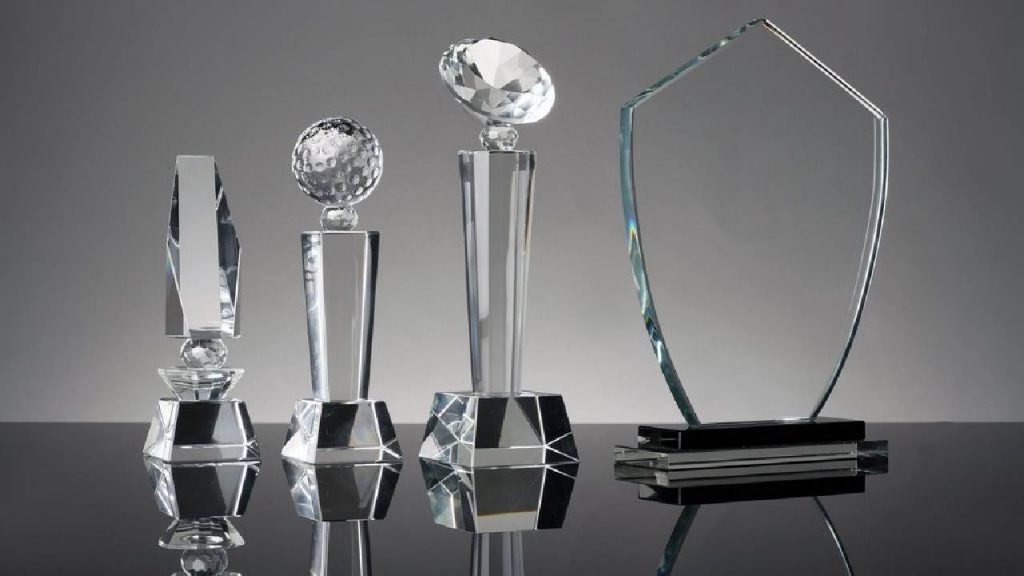As the foundation material for plaques and awards, both glass award and crystal award make an intuitive choice. However, before it turns into a molten liquid, the rough, reflective substance we know as glass is simply the end product of thermally treating sand. In a process that can take anywhere from a few hours to a couple of weeks, that liquid is then further treated, poured, moulded and bevelled into its final design.
In the award substratum family tree, crystal and glass awards are relatives, similar enough to the passing eye, but with sufficient variations and singularities that set them apart upon closer inspection.

Table of Contents
Ästhetics
While both glass and crystal conjure clear, colourless and transparent surfaces with immediate images, the two actually contain distinct visual differences.
Clarity: One of the most vivid and dazzling natural substances known to mankind is crystal. Although blown glass actually carries a natural shine, its real refraction of light is not on par with pure optical crystal, resulting in a less “clear” distribution of light rays and a much duller final shine.
Vibrancy: Light moves through the crystal more quickly and distributes further. Glass air bubble striations, on the other hand, disturb a light-ray transfusion, reducing its vibrancy.
Color: There can be trace hues in blown glass, often imperceptible to the naked eye but ultimately shifting its coloration and purity. There is no way to eliminate traces of colour from the bottle. However, crystal is a perfectly transparent organic substrate that includes no hues, pigments or discolorations that occur naturally. Crystal awards can only have colour when colour is applied according to design requirements.
Regarding weight
Awards for crystal would be heavier than awards for glass. This is mainly due to the chemical structure of the crystal, which is denser than glass and forms a more compact substrate material.
This density is also part of the reason that it is hard to scratch or dent the crystal. Crystal surfaces can remain smooth and flawless for much longer than their glass-like material equivalents, and notably longer than acrylic awards.
Personalizations
To mould and form awards, both glass and crystal use a thermal-heat process. This approach enables a number of customizations of form and picture to match your vision for your gratitude and thank you tokens.
The ability of crystal and glass to manage intricate forms, details and finishes is not similar.
Thickness/award dimensions: Of the two materials, crystal is the more workable. During the heating phase, it’s simpler to sculpt and form. As a result, crystals can produce thinner edges of the award and finer embellishments of the award that would otherwise crack if glass were melded.
Material fusion: A much longer and more labor-intensive thermal process is the synthesis of crystals with other materials, including glass and acrylic. The structure of glass makes fusing with other substrates such as metal and plastic more compatible, but not the sole material capable of doing so. High-quality experts will be working on multi-material final awards for both glass and crystal.
PRICE
With unrivalled luminescence, light refraction and longevity, Crystal is a luxury product. It is higher than glass and acrylic awards for this combination of shape and long-term function costs, but it will be more impactful, last longer and need less maintenance than any of these products.


